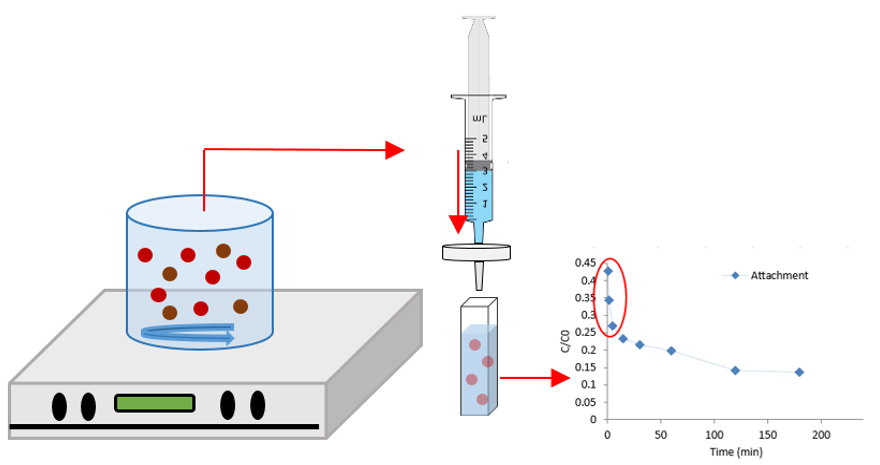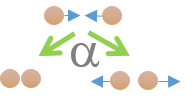Soil batch tests
Batch testing can be used in the laboratory to measure the attachment efficiency (α) of nanoparticles to soil.
Batch testing provides an alternative to column tests, and while the same parameters can be employed, batch testing provides a somewhat simplified approach, allowing larger datasets to be readily obtained.
 |
1. A matrix (artificial rainwater) of known volume is mixed with a known mass of soil (sieved to 2mm).
2. Nanoparticles of known size and concentration are added, providing a known solid:liquid ratio.
3. The solution is constantly stirred and aliquots collected by syringe along a front-loaded time series gradient.
4. The batch test is then repeated using the same liquid:solid ratio and soil sample, with the addition of a known quantity of salt, increasing the ionic strength of the sample such that the attachment efficiency (α) equals unity. |
Mechanisms & Methods |
Used for |
|
The experimental parameters of the batch test – such as ratio of nanoparticles to soil, ratio of water to soil, and the chemistry of the water – must be optimized such that the observed rate of attachment is neither so fast that it is complete immediately, nor so slow that effectively nothing happens over the period of the test. The optimal experimental variables may vary for each soil type. Mixing speed and conductivity must also be considered as they too influence the rate of attachment. Thus, batch tests have to be repeated adjusting the experimental variables until a robustly measurable extent of attachment is seen (see graph). The soil and rainwater matrix solution must first be equilibrated by constantly stirring for at least one hour to provide a stable background that can be subtracted from the absorbance of the supernatants at each time point. Following the sampling, the unattached nanoparticle concentrations in the aliquots are immediately measured, using UV-Vis absorbance or single particle ICP-MS, depending on the particles under study. |
Read more |
Read also |
| Barton L E, et al. (2014) Theory and Methodology for Determining Nanoparticle Affinity for Heteroaggregation in Environmental Matrices Using Batch Measurements. Environmental Engineering Science. 31(7): 421–427. https://doi.org/10.1089/ees.2013.0472 |
Contact

Jessica Adams
Centre for Ecology and Hydrology (CEH)

